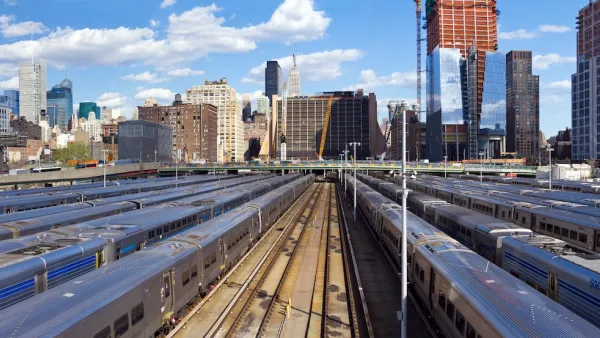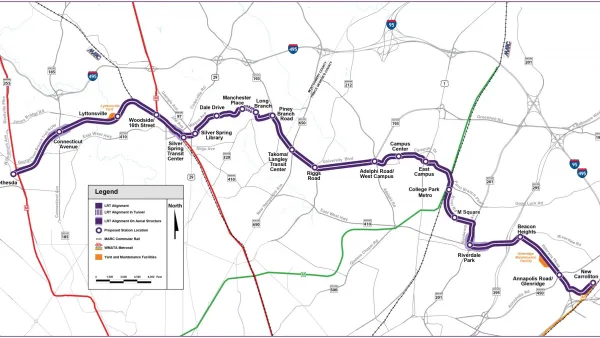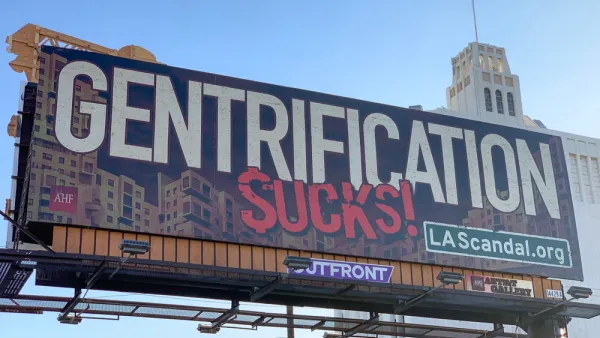The report recommends making displacement prevention a more central component of land-use policy.

"Displacement is often reported as individual battles over affordable housing or new development," notes Audrey Wachs in The Architect's Newspaper. But a new report from the Regional Plan Association takes a wider lens on the ongoing trend of displacement in the tri-state area around New York City.
Pushed Out: Housing Displacement in an Unaffordable Region found that in "desirable, central city neighborhoods," the number of households earning less than $100,000 a year has diminished by 2 percent, while the prevalence of households making over $100,000 has increased by 11 percent.
Data shows that throughout New York metropolitan area, wealthier (and whiter) people are replacing people of color in dense, central city neighborhoods with good transit access. There are, the RPA estimates, 990,000 people in the region who are at-risk of displacement; more than two-thirds of this group are Black or Latino.
Some municipalities have taken measures to curb the gentrification spurred by transit-oriented development; Jersey City, for example, has begun offering incentives for residential development outside of transit-rich areas. But the study notes that it can be difficult to fund affordable housing when federal standards for "affordability" don't align with local needs, and recommends other policy approaches cities could take to ensure affordability and prevent displacement, Wachs reports.
To ease the rising cost of housing and keep low-income residents in place, Pushed Out proposes policies like deeper rental subsidies, broader affordability ranges, centering displacement risk into land-use, and more legal protections for tenants, especially around eviction prevention and in areas outside of New York City where rent protections are weak or non-existent.
FULL STORY: A new report shows how sky-high housing costs fuel displacement in the tristate area

Analysis: Cybertruck Fatality Rate Far Exceeds That of Ford Pinto
The Tesla Cybertruck was recalled seven times last year.

National Parks Layoffs Will Cause Communities to Lose Billions
Thousands of essential park workers were laid off this week, just before the busy spring break season.

Retro-silient?: America’s First “Eco-burb,” The Woodlands Turns 50
A master-planned community north of Houston offers lessons on green infrastructure and resilient design, but falls short of its founder’s lofty affordability and walkability goals.

Test News Post 1
This is a summary

Analysis: Cybertruck Fatality Rate Far Exceeds That of Ford Pinto
The Tesla Cybertruck was recalled seven times last year.

Test News Headline 46
Test for the image on the front page.
Urban Design for Planners 1: Software Tools
This six-course series explores essential urban design concepts using open source software and equips planners with the tools they need to participate fully in the urban design process.
Planning for Universal Design
Learn the tools for implementing Universal Design in planning regulations.
EMC Planning Group, Inc.
Planetizen
Planetizen
Mpact (formerly Rail~Volution)
Great Falls Development Authority, Inc.
HUDs Office of Policy Development and Research
NYU Wagner Graduate School of Public Service




























